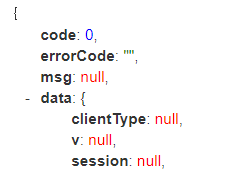只需一步,在Spring Boot中统一Restful API返回值格式与统一处理异常
统一返回值
在前后端分离大行其道的今天,有一个统一的返回值格式不仅能使我们的接口看起来更漂亮,而且还可以使前端可以统一处理很多东西,避免很多问题的产生。
比较通用的返回值格式如下:
public class Result<T> {
// 接口调用成功或者失败
private Integer code = 0;
// 失败的具体code
private String errorCode = "";
// 需要传递的信息,例如错误信息
private String msg;
// 需要传递的数据
private T data;
...
}
最原始的接口如下:
@GetMapping("/test")
public User test() {
return new User();
}
当我们需要统一返回值时,可能会使用这样一个办法:
@GetMapping("/test")
public Result test() {
return Result.success(new User());
}
这个方法确实达到了统一接口返回值的目的,但是却有几个新问题诞生了:
- 接口返回值不明显,不能一眼看出来该接口的返回值。
- 每一个接口都需要增加额外的代码量。
所幸Spring Boot已经为我们提供了更好的解决办法,只需要在项目中加上以下代码,就可以无感知的为我们统一全局返回值。
/**
* 全局返回值统一封装
*/
@EnableWebMvc
@Configuration
public class GlobalReturnConfig {
@RestControllerAdvice
static class ResultResponseAdvice implements ResponseBodyAdvice<Object> {
@Override
public boolean supports(MethodParameter methodParameter, Class<? extends HttpMessageConverter<?>> aClass) {
return true;
}
@Override
public Object beforeBodyWrite(Object body, MethodParameter methodParameter, MediaType mediaType, Class<? extends HttpMessageConverter<?>> aClass, ServerHttpRequest serverHttpRequest, ServerHttpResponse serverHttpResponse) {
if (body instanceof Result) {
return body;
}
return new Result(body);
}
}
}

而我们的接口只需要写成最原始的样子就行了。
@GetMapping("/test")
public User test() {
return new User();
}
统一处理异常
将返回值统一封装时我们没有考虑当接口抛出异常的情况。当接口抛出异常时让用户直接看到服务端的异常肯定是不够友好的,而我们也不可能每一个接口都去try/catch进行处理,此时只需要使用 @ExceptionHandler 注解即可无感知的全局统一处理异常。
@RestControllerAdvice
public class GlobalExceptionHandler {
private static final Logger LOG = LoggerFactory.getLogger(GlobalExceptionHandler.class);
/**
* 全局异常处理
*/
@ExceptionHandler
public JsonData handleException(HttpServletRequest request, HttpServletResponse response, final Exception e) {
LOG.error(e.getMessage(), e);
if (e instanceof AlertException) {//可以在前端Alert的异常
if (((AlertException) e).getRetCode() != null) {//预定义异常
return new Result(((AlertException) e).getRetCode());
} else {
return new Result(1, e.getMessage() != null ? e.getMessage() : "");
}
} else {//其它异常
if (Util.isProduct()) {//如果是正式环境,统一提示
return new Result(RetCode.ERROR);
} else {//测试环境,alert异常信息
return new Result(1, StringUtils.isNotBlank(e.getMessage()) ? e.getMessage() : e.toString());
}
}
}
}
其中的 AlertException 为我们自定义的异常,因此当业务中需要抛出错误时,可以手动抛出 AlertException 。
以上就是统一处理返回值和统一处理异常的两步。
正文到此结束
热门推荐
相关文章
Loading...











![[HBLOG]公众号](https://www.liuhaihua.cn/img/qrcode_gzh.jpg)

